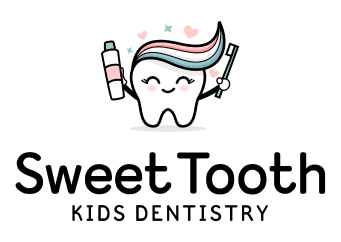Maintaining good oral health is crucial for children as it sets the foundation for healthy teeth and gums throughout their lives. However, like adults, children can also experience various dental problems requiring attention and care. This article will explore the most common dental issues affecting children and discuss their causes, symptoms, prevention, and treatment options.
Tooth Decay (Cavities):
Tooth decay, also known as dental caries or cavities, is one of the children’s most prevalent dental problems. It occurs when bacteria in the mouth produce acids that erode the tooth enamel. Poor oral hygiene, frequent consumption of sugary foods and drinks, and inadequate fluoride intake contribute to tooth decay. Symptoms include toothache, sensitivity, visible pits or holes in the teeth, and discoloration. Prevention involves regular brushing, flossing, a balanced diet, and fluoride treatment. Treatment may include dental fillings or, in severe cases, dental crowns or extractions.
Gum Disease (Gingivitis and Periodontitis):
Gum disease can also affect children, though it is more commonly seen in adults. Gingivitis is the initial stage, characterized by inflamed gums that may bleed during brushing or flossing. If left untreated, it can progress to periodontitis, causing gum recession, loose teeth, and even bone loss. Poor oral hygiene, plaque buildup, and certain medical conditions can contribute to gum disease in children. Prevention involves proper oral hygiene, regular dental check-ups, and a healthy diet. Treatment may include professional cleaning, antibiotics, and, in severe cases, periodontal surgery.
Malocclusion (Misaligned Teeth):
Malocclusion refers to the misalignment of the teeth and jaws. Various factors, including genetics, thumb-sucking, prolonged pacifier use, early loss of baby teeth, or oral habits like tongue thrusting, can cause it. Common types of malocclusion in children include overcrowding, overbite, underbite, crossbite, and open bite. Malocclusion can lead to difficulty chewing, speech problems, and self-esteem issues if left untreated. Treatment options may include braces, retainers, or other orthodontic appliances, depending on the severity of the condition.
Tooth Eruption Problems:
Sometimes, children may experience delays or abnormalities in the eruption of their primary (baby) or permanent teeth. A delayed eruption can occur due to genetics, nutritional deficiencies, systemic illnesses, or oral habits. Abnormalities include teeth erupting in the wrong position or missing altogether. Early detection through regular dental check-ups is crucial for timely intervention. Treatment options may consist of orthodontic appliances, tooth extractions, or monitoring the eruption process.
Dental Trauma:
Accidents and injuries can cause dental trauma in children, resulting in broken, chipped, or knocked-out teeth. Active participation in sports, rough play, and falls are common causes. Immediate dental attention is necessary for assessing the extent of the injury and determining the appropriate treatment. Treatment options may include bonding, dental crowns, root canal therapy, or tooth re-implantation for knocked-out teeth. Mouthguards can protect sports activities, reducing the risk of dental trauma.
Dental Fluorosis:
Excessive fluoride intake during tooth development can lead to dental fluorosis, a condition characterized by white or brown spots on the teeth. It usually occurs due to swallowing fluoride toothpaste or consuming water with high fluoride content. Mild cases of fluorosis do not require treatment, as the discoloration is often cosmetic. However, severe cases may require professional teeth whitening or other cosmetic procedures.
Thumb-Sucking and Pacifier Habits:
Thumb-sucking and pacifier use are everyday habits in infants and toddlers. Prolonged and vigorous habits can cause malocclusion and other dental problems, such as open bites or protruding front teeth. Most children naturally outgrow these habits, but intervention may be necessary if they persist beyond the age of 3 or 4. Techniques like positive reinforcement, offering alternatives, or using habit-breaking appliances can help children overcome these habits.
Conclusion:
Awareness of common dental problems affecting children is crucial for parents and caregivers to ensure optimal oral health. Regular dental check-ups, proper oral hygiene practices, a balanced diet, and preventive measures such as fluoride treatment and mouthguards during physical activities play vital roles in maintaining healthy teeth and gums. Early detection and prompt treatment of dental issues can prevent complications and promote a lifelong habit of good oral care, setting the stage for a bright and healthy smile throughout a child’s life.


